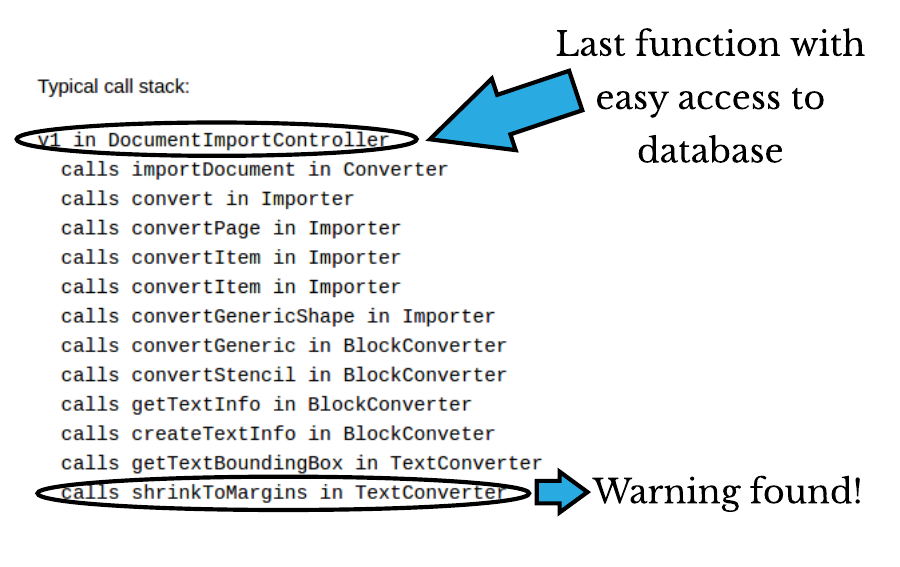
Tracking data in complex Java code: A functional programming approach
James Hart
Reading time: about 8 min
Topics:

In this article, I’ll discuss three different ways I considered solving this problem, along with the pros and cons of each method. All of these methods use common programming constructs and all have serious downsides. Fortunately, by taking inspiration from purely functional programming, I found a way to fix one of the methods so that I felt comfortable using it in a production system. That fix will be the topic of the next article.
1. Using a singleton to track warnings
Experienced programmers are shaking their heads right now. Singletons have a bad reputation in the programming community, for good reason. It is, however, a very natural solution to this kind of problem, and so it is worth some effort to understand what a singleton is, how it works, and why it breaks. That way the advantages of the later solutions I outline, which seem like more work, will be clearer by comparison. A first cut at the Java code for this singleton would look something like this:class WarningManager {
private static WarningManager only = new WarningManager();
private List<String> warnings;
private WarningManager() {
this.warnings = new ArrayList<>();
}
public static WarningManager getInstance() {
return only;
}
public void addWarning(String warning) {
this.warnings.add(warning);
}
public List<String> getWarnings() {
return new ArrayList<>(this.warnings);
}
}
WarningManager.getInstance().addWarning(“warning text”);
2. Pass around a mutable list of warnings
In this method, you modify all the functions which can produce warnings such that they pass a list of warnings around as a local parameter, as shown in this code:class ElementParser {
public Element getElement(List<String> warnings, …) {
...
warnings.add(warning1);
...
subMethod(warnings, ...);
...
}
private Element subMethod(List<String> warnings, ...) {
...
warnings.add(warning2);
...
}
}
3. Make the warnings part of the return type
This method used to be a lot harder. Nowadays, though, compilers and language design have reached the point where there is no excuse for not using this if you can. In Java, you would implement this by creating a class of the type:public class ConversionResult<T> {
private T result;
private List<String> warnings;
public T get() { return result; }
public List<String> getWarnings() { return warnings; }
public ConversionResult(T result) {
this.result = result;
this.warnings = new ArrayList<>();
}
public addWarnings(List<String> warnings) {
this.warnings.addAll(warnings);
}
}Conclusions
As a programmer with a theoretical bent and a decent amount of experience, I really didn’t want to use a singleton. Too much can go wrong there. I really liked the mutable list but considered using the return type to be more elegant. However, I felt that manually combining the warnings was a serious downside to this approach. It would be so easy to break the chain and let messages be ignored. Fortunately, some subtle ideas from functional programming suddenly became clear to me, and I was able to solve these problems to my own satisfaction. We will return to how I did this in a later post.About Lucid
Lucid Software is the leader in visual collaboration and work acceleration, helping teams see and build the future by turning ideas into reality. Its products include the Lucid Visual Collaboration Suite (Lucidchart and Lucidspark) and airfocus. The Lucid Visual Collaboration Suite, combined with powerful accelerators for business agility, cloud, and process transformation, empowers organizations to streamline work, foster alignment, and drive business transformation at scale. airfocus, an AI-powered product management and roadmapping platform, extends these capabilities by helping teams prioritize work, define product strategy, and align execution with business goals. The most used work acceleration platform by the Fortune 500, Lucid's solutions are trusted by more than 100 million users across enterprises worldwide, including Google, GE, and NBC Universal. Lucid partners with leaders such as Google, Atlassian, and Microsoft, and has received numerous awards for its products, growth, and workplace culture.